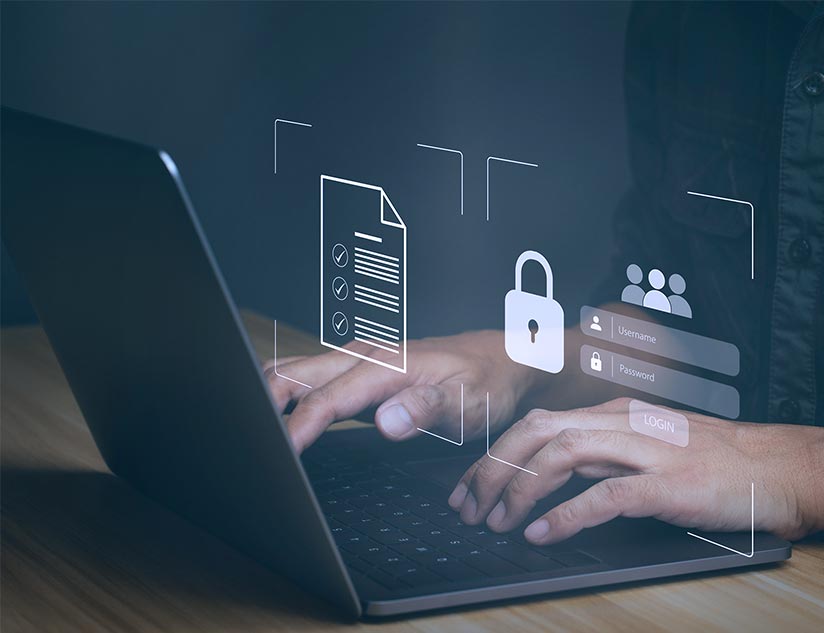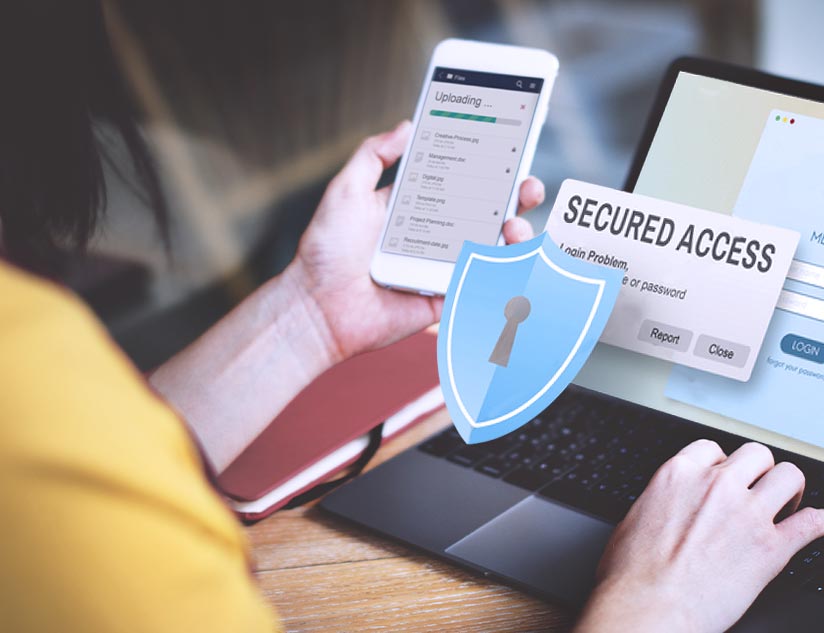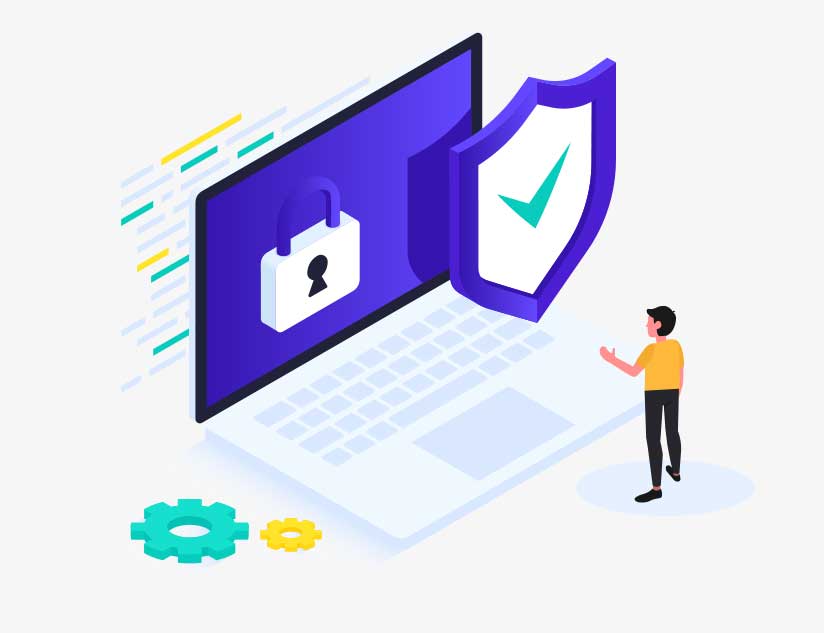In the age of flying cars, what can you expect of digital education? Cutting-edge technologies promise streamlined progression of the individual toward their learning goals. Digital infrastructure is as critical for education as it is for healthcare. Ensuring equitable opportunities for specially-abled students and multilingual support are essential for an inclusive educational space. Connectivity, sustainability, interoperability, and resilience must all facilitate behavioral, social, and skill development. In the hyper-connected age, the digital infrastructure must be usable, defensible, and privacy-enhancing. Much like traffic management for air traffic, we need sophisticated interoperability that bolsters data security in online education. Data privacy in K-12 is crucial, ensuring that students’ personal information is protected while enabling personalized and effective learning experiences.
Interoperability: The Glue that Holds it All Together
UNESCO rightly points out that despite the government and educational institutions having access to massive data volumes, there is no “cohesive information ecosystem.” Data silos that are useful in specific domains are not optimally leveraged when integrated. There needs to be a strategic design decision that drives collective responsibility while providing comprehensive insights.
Digital learning tools that function independently are disconnected from one another, forcing students and educators to navigate multiple logins, data transfers, and distinct interfaces. This approach makes it difficult for users to connect the dots in their learning journey. The friction created in the learning process adversely affects students’ experiences. These tools need to “speak” to each other. Interoperability ensures that digital tools can seamlessly communicate and exchange data in real time.
Improved Efficiency
All learner data is maintained within a central student information system (SIS). This eliminates redundancy while reducing error potential. Users do not have to re-enter data or login credentials into multiple platforms while educators across the system can leverage integrated data. Interoperability streamlines workflows, saving precious classroom time.
Enhanced Flexibility
Educators can choose the best tools for each learning situation without worrying about compatibility issues. Students benefit from a wider range of engaging learning experiences. Moreover, it keeps the institution future-ready. Even if the learning technology evolves, all data can be seamlessly migrated to new systems.
Driving Student Success
Consolidated data gives educators, administrators, and edtechs a bird’s eye view of student progress. Administrators do not have to accumulate and cleanse student data from disparate sources. Interoperable systems can be automated to deliver comprehensive reports. These enable learning personalization, tailoring instruction and resources to individual needs.
Fostering Continuous Improvement
A bird’s eye view of education at a specific school and/or district level helps identify learning and skill gaps. This helps track learning trends and identify areas of improvement within the curriculum and teaching methods.
Interoperability and Data Privacy: Not a Tradeoff
A common concern surrounding interoperability is its impact on student data privacy. And why not, especially after 80% of primary and secondary level institutions reported experiencing ransomware attacks in 2023. So, is interoperability a threat to data privacy? The short answer is a resounding NO. In fact, interoperability reinforces data security in many ways.
Superior Security across Platforms
In a well-designed interoperable system, all data remains within the secure boundaries of the platform. Data is not exported or stored across multiple, unsecured environments. Data sharing follows the highest authentication, user control, and transmission security standards.
Permission-Based Access
Access to student data is strictly controlled, and granted only with express permission from authorized personnel, following established protocols. Features such as multi-factor authentication, and role-based access controls ensure that student data is accessible to only authorized user roles. For sharing and large-scale insights, all data is anonymized and normalized.
Simplified Processes Reduce Risk
Interoperability often leads to simpler processes for users. Especially for young learners, remembering multiple login credentials can be difficult. Single Sign-On (SSO), for instance, allows access to numerous tools using a single set of credentials, simplifying access for all users. According to the Consortium for School Networking (CoSN), 85% of districts leverage SSO to strengthen cybersecurity, implying that the two are complementary forces in protecting online learning platforms. This also reduces the risk of human error and unauthorized access. A consistent interface also simplifies how users experience the learning ecosystem.
One Log-Out
Interoperable systems enable comprehensive and consistent security management. Users can log out of all integrated tools simultaneously, by signing out of a single product. This is especially useful for users in critical roles. They can even force logout every user simultaneously and reboot the security framework, preventing a breach from propagating any further than it already has.
Building a Data Fortress
Educational technologists can build a digital ecosystem that thrives in the evolving K12 learning landscape via interoperable tools that share data and simplify user movement. However, prioritizing interoperability needs a comprehensive security strategy, one that monitors data access and governs all data movement while complying with global standards. Best practices to strengthen student data protection include:
Encryption
Encryption is paramount whether data is at rest or in transit. It makes data unusable even if unauthorized parties are able to maliciously gain access.
Cloud Security
Cloud-based platforms must offer robust security features to protect against cyberattacks. All touchpoints, modes of access, and network vulnerabilities must be regularly monitored and audited for security protocols.
Regulatory Compliance
Digital infrastructure should adhere to all relevant data privacy regulations, such as FERPA, CIPA, and COPPA. In addition, standardizing the platform with interoperability guidelines, such as LTI and WCAG, can boost adoptions.
Role-Based Access
Implement a system with granular access controls, ensuring only authorized users can access specific data points, based on their roles. Administrators can control access by granting permissions, while educators can control module access rights for learners. With no-code customizations, this is easily accomplished in modern learning platforms.
Digital Citizenship Education
Empower students to become responsible digital citizens by teaching them about online safety and responsible data practices. Making learners a part of security groups can significantly reduce threat potential.
Steering Digital Education Towards a Safe and Interconnected Future
Emerging technologies, such as augmented or virtual reality, and IoT can further enhance learning experiences. Advances in AI will also strengthen interoperability while ensuring security to enhance educational outcomes for varied stakeholders. A future-proof digital ecosystem offers healthy and safe learning experiences, while driving adoption at scale. The new development paves the way for edtechs to deliver more engaging and effective learning and teaching experiences securely. For educators, interoperable tools streamline content authoring, publishing, and distribution. These facilitate data consolidation and analysis to gather deep insights. Plus, they empower educators to personalize learning and strengthen data-driven decision-making.
The OECD says interoperability is key to unifying and optimizing data usability for digital ecosystems. This can help edtechs unlock the potential of online education. Interoperability that prioritizes security can be instrumental in powering the education sector to leverage data to support continued improvement and inspire innovation.
















